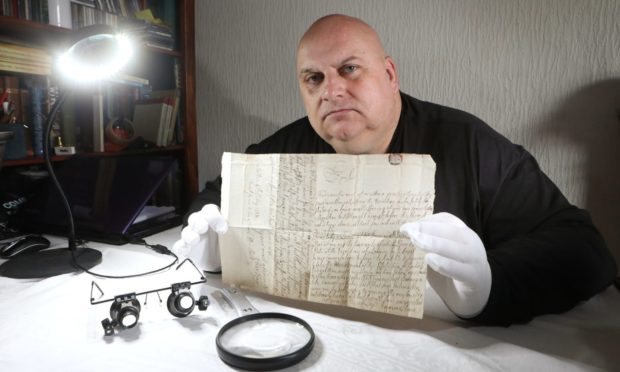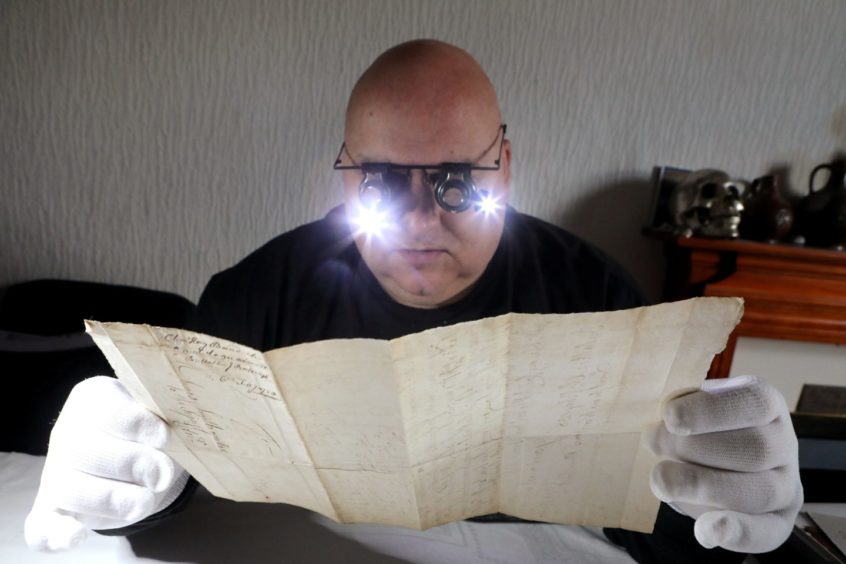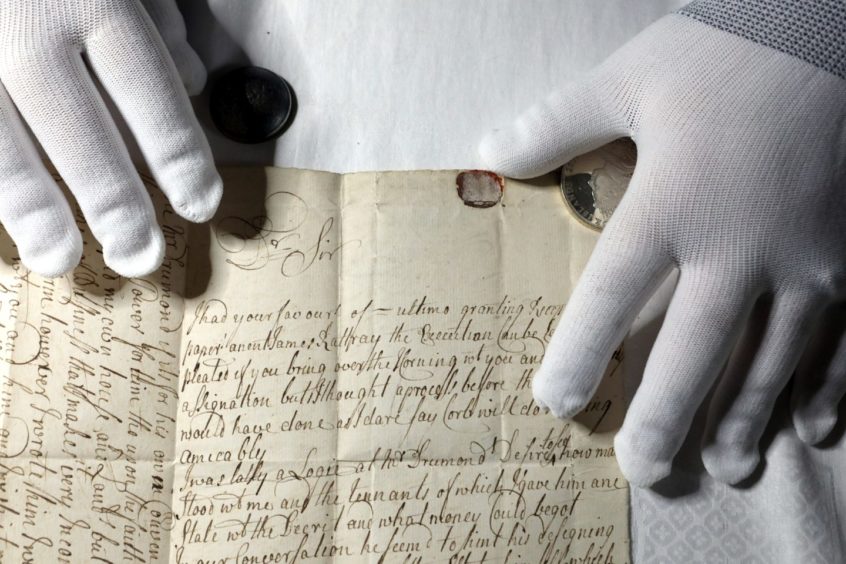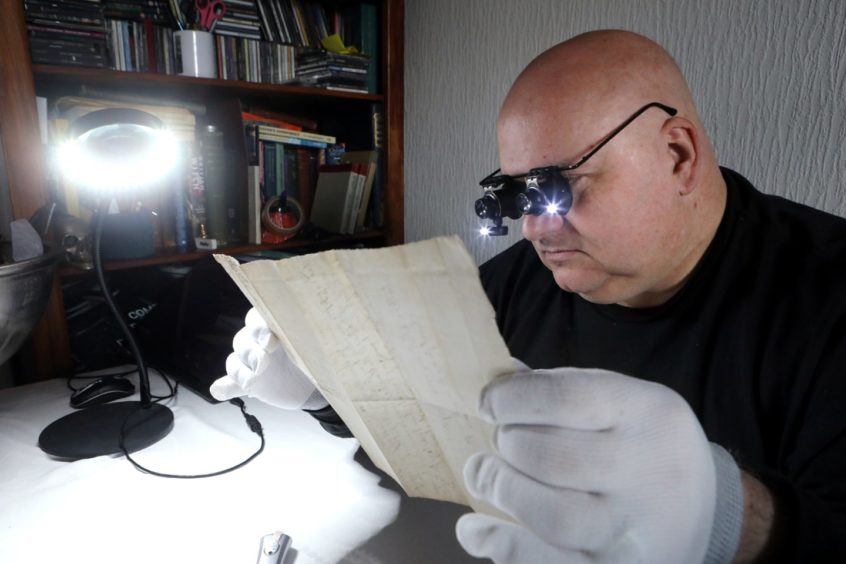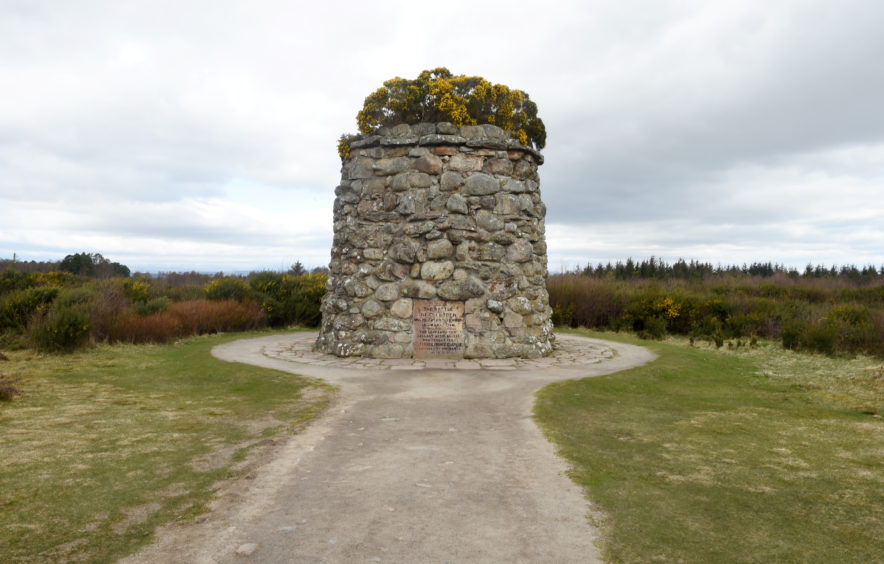A Fife author with a fascination for historic documents is investigating whether a manuscript he has acquired spells out the death sentence for a Jacobite rebel in 18th century Perth.
Leven-based author and witch historian Lenny Low has obtained a lawyer’s document from 1758 which appears to publicly denounce as a traitor a Perth surgeon called James Rattray who he understands fought with the Duke of Atholl’s regiment at the Battle of Culloden in 1746.
Mr Low said his initial research suggests that Rattray survived the battle and went on the run overseas before returning to Perth.
However, in 1758, the authorities hunted him down.
“I collect manuscripts and old letters for my research – I’ve got documents going back to the 1600s,” Lenny told The Courier.
“They can be bought on the internet – there’s mention of the date of the document and nothing more.
“I picked one out from 1758 because it had the wording ‘The Horning’ on it.
“It’s basically the old legal term to be branded a traitor. If they brought in The Horning it went to the town market place, and a horn would be blown three times to let everyone know there was a traitor in their midst– usually to be followed by execution.
“The letter I have was from the Signet in Edinburgh – the king’s judge – to a lawyer in Perth basically saying he was bringing The Horning over for a man named James Rattray so the execution can begin.
“James Rattray was a Jacobite fighting in the Duke of Atholl’s regiment. He was at Culloden. He was a surgeon. He was from Perth.
“He’s on the enrolment list of the Pretender. But what I can’t find out is what, if anything, happened to him.”
Mr Low said his research so far had revealed details of a John Rattray, who was surgeon-general and personal surgeon to Prince Charles. After the battle of Culloden, Rattray surrendered to the Hanoverians and was imprisoned in Inverness.
However, he is unclear of the relationship, if any, with James Rattray.
“I’ve approached the Culloden museum and they are going daft about this – they are getting their experts to look at it in January,” he added.
Rulzion Rattray, Clan Rattray historian, said they already know of John Rattray who was a surgeon.
There is a statue of him at Leith Links in Edinburgh, because he also signed the first rules of Golf.
This James Rattray, however, appeared to be one of his own direct ancestors James Rattray of Crob and Rannagulzion.
“This James Rattray was commissioned into the Atholl Brigade as a Major of Foot in the Tullibardine regiment, however he refused to serve in this regiment due to an ongoing dispute with the Robertsons and was court marshalled,” said Mr Rattray.
“The upshot of the trial was he was allowed to serve in the same capacity (Major) in Lord Ogilvie’s regiment, where he served with his brothers in Law the Kinlochs of Kinloch.
“The more than 100 men he had personally raised probably played a part in this decision.
“He served right through the campaign the regiment marched in good order from Culloden battlefield, re mustering at Ruthven Barracks before marching back to Glen Isla and disbanding.
“He was later captured and taken to London where he was tried for high treason but managed to be acquitted as a witness came into swear that he had seen Major Rattray under arrest by the Jacobites (during the period he was being court marshalled). The judge found him not guilty and he was allowed to go free.”
